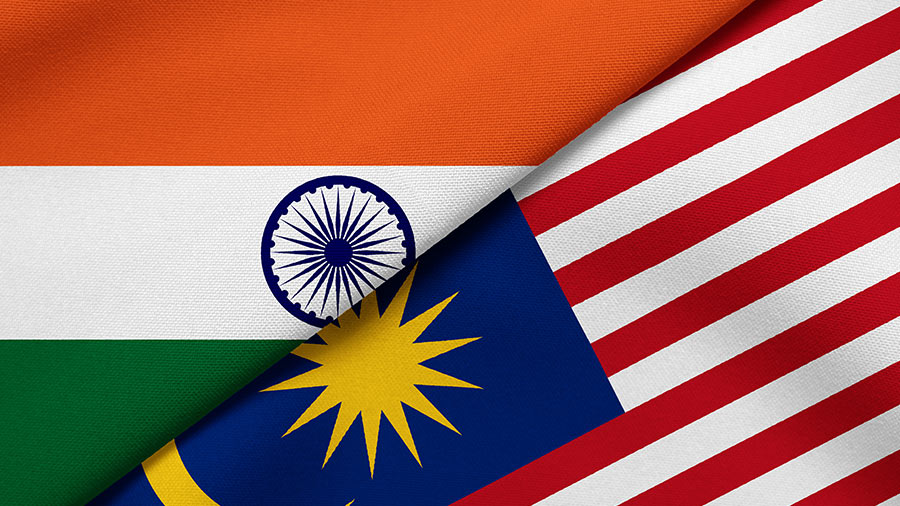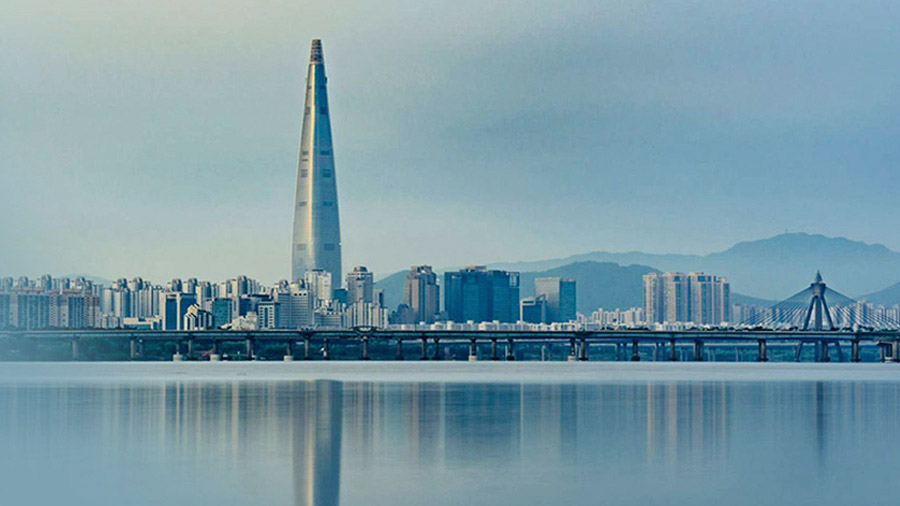The India-Malaysia partnership, rooted in deep historical ties, spans defense, economics, and cultural exchanges. Despite challenges such as geopolitical shifts and trade restrictions, their strategic collaboration continues, buoyed by shared membership in global forums. Enhanced trade, tourism, and technology cooperation have amplified economic prospects. Both countries aim to fortify bilateral ties through initiatives like the Comprehensive Economic Partnership Agreement amendment, targeting a US$25 billion trade volume.
The historical ties between India and Malaysia trace back millennia, marked by linguistic, cultural, and historical connections. While formal diplomatic relations were established in 1957, the partnership has endured through regional crises, becoming a cornerstone of India's engagement in the East.
Over the past few decades, despite occasional challenges, both nations have maintained steady cooperation in defense, politics, economics, and parliamentary exchanges. Starting in 2010, a comprehensive framework was adopted to foster a multifaceted relationship. Prime Minister Narendra Modi's visit in November 2015 further elevated the ties to a strategic partnership, ushering in new dimensions.
India's foreign policy, seeking a more robust global role and navigating the Indo-Pacific regional landscape amid China's influence, has intensified focus on relations with Kuala Lumpur. Malaysia holds a crucial position in expanding India's trade with ASEAN, aligning with India's Act East Policy, advancing maritime connectivity in the Strait of Malacca and South China Sea, and supporting ASEAN's Indo-Pacific Perspective (AOIP) and the Indo-Pacific Initiative (IPOI).
With Anwar Ibrahim assuming office as Malaysia's Prime Minister in November 2022, there has been an uptick in official visits, reinforcing the shared commitment to addressing regional and global challenges. The recent upgrade from a strategic partnership to a comprehensive strategic partnership underscores this deepening alliance.
In November 2023, both nations fortified their strategic partnership in political-diplomatic affairs and strategic defense, signaling a heightened level of engagement. Strengthening advanced strategic partnerships is envisioned to spur increased interaction.
Mechanisms such as the Ministry of Foreign Affairs' consultation framework, the establishment of the "India-Malaysia Parliamentary Friendship Group" in 2011, Joint Commission Meetings (JCM), diverse business-focused MoUs, the 1993 Defense Cooperation MoU, India's commitment to supporting Malaysia in August 2022, cooperation in navigation and safety in the South China Sea and Indian Ocean, the Indo-Malaysia Defense Cooperation Meeting (MIDCOM), and the Joint Task Force on Combating Terrorism and Transnational Crimes have significantly bolstered the geopolitical and political ties between both nations.
Trade between India and Malaysia: A bilateral snapshot
Malaysia stands as India's third-largest trading partner within the ASEAN region, while India holds the position of Malaysia's largest trading partner in Southeast Asia.
In 2021, India shipped goods worth US$6.63 billion to Malaysia, while Malaysia's exports to India totaled US$11.4 billion in the same year. By 2022, Malaysia's exports to India surged to US$12.42 billion.
Key exports from Malaysia to India
The primary exports from Malaysia to India in 2022 comprised Animal and vegetable fats and oils, cleavage products (US$3.61 billion), Mineral fuels, oils, distillation products (US$1.59 billion), Electrical and electronic equipment (US$1.53 billion), Machinery, nuclear reactors, boilers (US$828.74 million), Organic chemicals (US$684.35 million), Plastics (US$533.96 million), Miscellaneous chemical products (US$452.90 million), Copper (US$320.80 million), Optical, photo, technical, medical apparatus (US$264.98 million), Iron and steel (US$254.64 million), Glass and glassware (US$231.73 million), Aluminum, Rubbers, Fertilizers, and Wood.
Primary exports from India to Malaysia
On the other hand, India's exports to Malaysia in 2022 amounted to US$7.19 billion. The primary commodities exported by India to Malaysia included Mineral fuels, oils, distillation products (US$1.74 billion), Aluminum (US$597.26 million), Organic chemicals (US$589.71 million), Meat and edible meat offal (US$509.73 million), Machinery, nuclear reactors, boilers (US$417.59 million), and Electrical and electronic equipment.
India's economic appeal and bilateral investments
India's prominence as the world's fifth-largest economy, marching towards the coveted US$5 trillion mark, coupled with its substantial population, technological advancements, and diverse industrial landscape, has drawn significant attention from Kuala Lumpur towards the Indian market.
Investment prospects in both industrial and service sectors, the burgeoning automobile industry, and the promotion of Indian pharmaceuticals in Malaysia have been key focal points to attract investments and broaden business horizons. Several agreements and initiatives have facilitated bilateral investments, notably the Bilateral Investment Promotion Agreement of 1997 and the Joint Commission Meeting (JCM). Agreements spanning higher education, performance management, project delivery, and governmental program monitoring have been instrumental in nurturing mutual investments. The CECA (Comprehensive Economic Cooperation Agreement) between Malaysia and India since 2011 and the FTA (Free Trade Agreement) between India and ASEAN on Trade and Investment since 2015 have significantly streamlined trade and investment processes.
Investment landscape
Kuala Lumpur, ranked as the 28th largest investor in India, has seen a substantial Foreign Direct Investment (FDI) inflow, totaling US$1.17 billion from April 2000 to March 2023. Around 70 Malaysian companies, including joint ventures, have established operations in India, focusing on diverse sectors like infrastructure, telecommunications, oil and gas, power plants, tourism, and human resources. Malaysian investments in India are projected to reach US$7 billion, with telecommunications garnering the most significant investment, closely followed by fuel, roads, and highways.
Key Malaysian companies like Apollo Hospitals and Yes Bank have made notable inroads into the Indian market, while Malaysian construction companies have a prominent presence in India, constituting the largest concentration outside Malaysia. Conversely, over 150 Indian companies, including top IT firms, have established themselves in Malaysia, participating in various sectors such as specialized chemicals, fabric production, healthcare, pharmaceuticals, IT, education, furniture, and biotechnology.
Economic engagements
Initiatives like the International Bank of India Malaysia (IIBM), launched in 2012 with an investment of US$83 million, and the active presence of the General Insurance Corporation of India in Malaysia underscore the depth of economic engagement between the two nations.
Key areas of collaboration between India and Malaysia
Energy
Meeting the escalating energy demands while attracting investments for energy infrastructure has fueled a deeper collaboration between India and Malaysia. The collaboration in the energy sector has seen substantial progress, emphasized by the 2012 Renewable Energy Cooperation Memorandum and the Joint Working Group on Renewable Energy.
Notably, bilateral trade, especially in fossil fuels like oil and gas, continues to be significant. However, there's an increasing focus on renewable energy. A recent announcement by Malaysian company Petron reveals a planned investment of around US$4.5 billion in renewable energy and green ammonia ventures in India.
Tourism and diaspora
Over the last two decades, tourism has been a cornerstone in fostering relations between India and Malaysia. Various agreements, including the India-Malaysia visa waiver for diplomatic and official passport holders, a tourism-focused memorandum of understanding in 2010, a bilateral agreement on employment and workers' welfare in 2009, and a revised air services agreement in 2017, have significantly contributed to the growth of tourism between the nations.
Malaysia boasts one of the world's largest communities of Indian origin, comprising around 2.77 million people, accounting for approximately 8.5 percent of Malaysia's population. Additionally, more than 140,000 Indian immigrants reside in Malaysia, encompassing professionals and workers from diverse sectors. This Indian diaspora plays a pivotal role in expanding trade networks and fostering communication channels between the two countries.
The tourist exchange between India and Malaysia has been substantial. In 2019, India welcomed around 3.35 million tourists from Malaysia, while approximately 7.35 million Indian tourists visited Malaysia. Before the onset of the COVID-19 pandemic, the bilateral tourism was well-supported by over 210 weekly flights between the two countries. Despite the challenges posed by the pandemic, efforts to revive and enhance tourism development between India and Malaysia are ongoing.
Technology and medicine
India's robust digital infrastructure has paved the way for a thriving startup ecosystem, boasting nearly 75,000 startups. Kuala Lumpur acknowledges India's technological prowess and holds a positive view of its capabilities. The collaboration in the pharmaceutical sector between India and Malaysia is steadily advancing.
The Malaysian market hosts over 100 Indian IT companies, and in November 2023, both nations agreed to delve deeper into science, technology, and foster closer cooperation within the startup realm. India has made substantial strides in expanding its digital payment network. New Delhi and Kuala Lumpur are reinforcing a framework for conducting business using national currencies and have initiated a process to review the Comprehensive Economic Cooperation Agreement (CECA). This review includes exploring new sectors such as electronics, semiconductors, new technologies, and fintech.
Moreover, noteworthy advancements in technical cooperation and the higher education sector are underway, exemplified by increased collaboration between the Malaysian Technical Cooperation Program (MTCP) and the Indian Technical and Economic Cooperation Program (ITEC). These initiatives signify the commitment of both countries to strengthen their technological and educational ties for mutual growth and advancement.
Food security and agriculture
Collaboration in agriculture and food security has strengthened in recent years, facilitating wider access to strategic goods and expanding food product export markets. India and Malaysia have engaged in a significant trade deal allowing the export of 100,000 tons of rice from India to Malaysia, despite India's prior ban on non-basmati white rice export and the lifting of Malaysia's palm oil import ban.
Local currencies
New Delhi and Kuala Lumpur have agreed to conduct trade settlements in Indian rupees, reflecting an intention to bolster trade relations. The utilization of local currencies can be advantageous, particularly for small and medium-sized enterprises (SMEs) seeking to mitigate currency fluctuations.
Defense and security
The defense ties between India and Malaysia have steadily expanded, marked by the signing of a defense cooperation memorandum in 1993, regular defense cooperation meetings, joint military exercises, and Malaysia's interest in acquiring 18 new Indian light fighter jets, indicating potential growth in arms trade between the two nations.
Challenges and prospects in India-Malaysia economic ties
The business landscape between India and Malaysia faces certain challenges that could potentially impede the ongoing economic momentum between India and Malaysia. Unfavorable geopolitical shifts, along with the prospect of global demand stagnation, and heightened import tariffs, pose significant hurdles. However, despite these challenges, the robust trade relationship between the two nations is likely to endure.
Amid these challenges, India and Malaysia have progressed to an advanced strategic partnership, sharing membership in key global forums such as the Commonwealth of Nations, NAM, G-15, and G-77, which form a strong foundation for mutual cooperation.
Numerous opportunities exist to further bolster bilateral relations. Initiatives like the prevention of double taxation, mutual customs assistance, increased air connectivity, and collaborations among airlines can substantially drive economic growth in trade and tourism. Additionally, factors like a dynamic diaspora, consistent GDP growth, a youthful population compared to China, expectations of increased Foreign Direct Investment (FDI), and rapid digitization bode well for enhancing mutual trade prospects in the future.
The recent revival of the India-Malaysia Joint Commission Meeting after a 12-year hiatus demonstrates a revitalized commitment to bilateral cooperation. The forthcoming amendment to the Malaysia-India Comprehensive Economic Partnership Agreement (MICECA), incorporating new economic sectors, aligns with the ambition to achieve a trade volume of US$25 billion within the next three years. Exploring opportunities in emerging sectors, diversifying trade portfolios, and fostering mutually beneficial collaborations not only support India's goal of becoming the world's third-largest economy by 2027 but also deepen India's integration with ASEAN.









